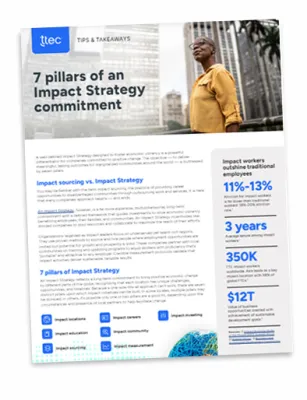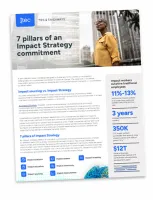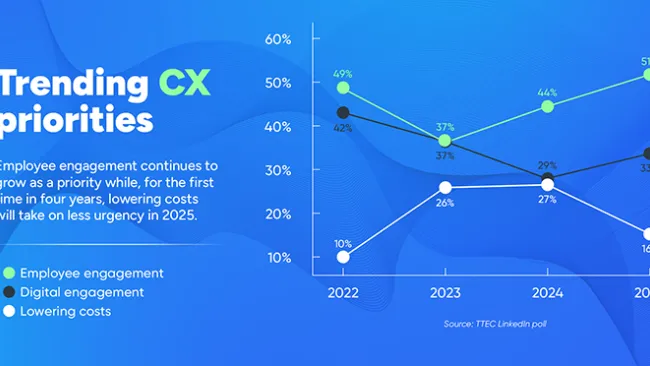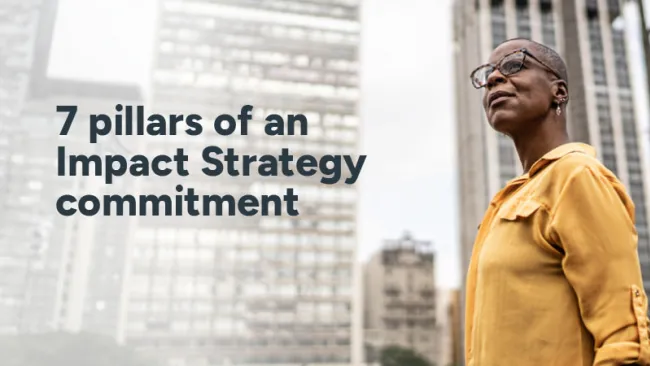In the same way that brand differentiation helps attract customers, culture differentiation helps attract the right employees. A clearly defined company culture can attract and retain employees with the right mix of talent and character who are motivated at all levels to meet the needs and expectations of customers and drive sustained growth.
And unsurprisingly, it’s popular for corporate values statements to include common themes such as trust, respect, diversity, or innovation. Maybe also fun, work-life balance, and community service. However, declaring that these are a company’s values is one thing. Actually putting them into practice is another.
Even though all employees receive the same memo or statement about a company’s culture when they are hired, most likely interpret it in different ways. A company’s culture doesn’t necessarily mean the same thing to every employee. The role that an employee holds in an organization may also affect his or her perception of the company’s culture. So we asked people who hold positions in a range of departments such as marketing, service, and information technology, “What does your company’s culture mean to you and how do you influence the company’s culture in your role?”
TECHNOLOGY’S PERSPECTIVE
Alex Rozhitsk, Systems Administrator, Blue Fountain Media, a digital marketing firm
For someone in my position, it’s vital to understand the impact effective communication has on company culture. Being able to explain something—and understand the importance of explaining something—in laymen’s terms is crucial in building the foundation of a strong relationship, both professionally and personally. What’s more, taking the time to get to know everyone and their personalities really helps strengthen the way in which you can communicate with them.
Working at a company that has multiple departments, each with different needs, priorities, and timelines, you learn quickly that being transparent and honest when setting deadlines and expectations is fundamental.
Unfortunately you can’t always prioritize particular requests from different departments and when you have to deliver not necessarily positive news, it’s important to inject a little positive personality. I try to steer clear of the textbook, templated emails, and remind my co-workers at the end of the day we’re all human.
Lastly, although there are processes in place, at the end of the day interpersonal communication is necessary in truly building a strong, united, and powerful team and environment. I place such a high importance on that—and make an effort to speak with people face-to-face whenever I can.
CUSTOMER SERVICE’S PERSPECTIVE
Stacie Herring, director of assisted experience at Intuit, a personal finance and tax software provider
We use the phrase, “design for delight,” and so we’re always gathering our customers’ feedback to make sure our products are meeting their needs. We reach out to customers who are advocates as well as detractors, and we have an outreach program to make sure we’re listening to our associates who are on the front line with our customers. We also do a lot of product prototyping at our lab.
Empathy and confidence are two things that we’re focusing on this year. A lot of companies approach the customer experience by empathizing with their customers. But as we looked at that approach in more detail and spoke with customers, we saw it was also about confidence. You can have a very empathetic associate but you don’t leave the interaction feeling very confident about the brand or the product. We found that a confident associate is much more inspiring to our customers. Empathy is still important, but we also started to incorporate more confidence into our hiring profiles and the way that we’re building associate training. The tax season is a short season and so we have to move fast, but I try to be accessible so that when people have questions or ideas they feel comfortable to speak up.
SALES’ PERSPECTIVE
Sary Stefanki, Sr. Director of Global Customer Success at Zendesk, a customer service technology provider
One value that holds true across every role at Zendesk is empathy, which makes for a pretty special culture. Because at its core, what we’re really doing here at Zendesk is figuring out how to help people help other people better. In my role running Zendesk’s Customer Success team, that value of empathy translates daily into the way we consult with our customers to have stronger, more genuine relationships using technology. So instead of saying, “This is what you should do” we try to lead with open questions, get them to visualize their own customers’ experiences, and come to solutions from that frame of reference.
MARKETING’S PERSPECTIVE
Leela Srinivasan, Chief Marketing Officer at Lever, an applicant tracking system provider
At Lever, we place a lot of value on collaboration. We’re a young company and it’s important that everyone works together. For example, every new employee takes the Colors test. The test helps employees understand how they operate and approach issues, what their strengths and weaknesses are and how they should best interface with people who have a different profile or color.
I’m also working closely with our head of recruiting on an exercise to help employees tell our story in public channels. I certainly noticed this when working at LinkedIn, that your company’s footprint and messages go much further when you include your employees. Employees who share their own stories of what it’s like to work at their company can have a much greater impact than traditional marketing.
And so we want to empower our employees to become ambassadors of our brand and share their own stories of what it’s like to work at our organization. When we publish new content, we also encourage our teams to share the information as part of their external personas. But authenticity is key. While we have guidelines, the last thing we want is for the stories to be scripted.
All departments play a large role in fostering and maintaining culture. Transforming a culture requires influencing people’s deepest beliefs and habitual behaviors. It’s hard enough to change one person’s behavior, let alone that of an entire organization. Keep in mind that building a culture is a journey. And once you reach the point where you have a strong company culture, do everything you can to preserve and grow it.
HUMAN RESOURCES’ PERSPECTIVE
Michael Wellman, SVP of Human Capital, TeleTech
The right culture is focused on what matters most to the organization. And while building a successful culture takes time, the best ones share a few common characteristics. Even if they don’t have control over setting the initial vision, there are many areas where HR and other professionals can have a real impact:
Promote unity with a common language: A common language makes it easier for employees to understand each other and sets expectations.
Create a set of values and standards: It’s also important to have a core set of values or principles to guide how a company’s employees behave as well as standards to measure whether they’re upholding those principles.
Act with integrity: Also known as doing the right thing, acting with integrity is essential to a company’s longevity and success. If every employee takes responsibility for his or her actions and role, the company has a much better chance of finding a solution to its challenges.
Leave room for autonomy: Give employees enough space or autonomy in order to carry out the tasks they need to accomplish. Formal contracts and rules-based metrics for performance have a place in a business, but employees also need the freedom to determine how best to approach an issue or resolve a problem.
Celebrate your cultural ambassadors: These employees are the ones who believe in the company and will go the extra mile to support it. They love to share work stories with friends and family and advocate for the brand without being asked.
Have fun as a team: Creating time for activities outside of the office helps employees step away from their cubicles and connect as a team. Some of the activities can be organized and structured, while others are just an opportunity for people to get to know each other.
Screen for character as well as skill: Skills can be learned, but it is much harder to cultivate the right attitude and character. While you want to hire the most talented person for a role, compromising on character, especially in critical roles, is a risky endeavor that is likely to undermine the company’s culture and long-term performance.
Stay nimble and brainstorm: Corporate cultures aren’t static. Set aside a few minutes on a regular basis to access your company culture and look for ideas to improve.
All departments play a large role in fostering and maintaining culture. Transforming a culture requires influencing people’s deepest beliefs and habitual behaviors. It’s hard enough to change one person’s behavior, let alone that of an entire organization. Keep in mind that building a culture is a journey. And once you reach the point where you have a strong company culture, do everything you can to preserve and grow it.















